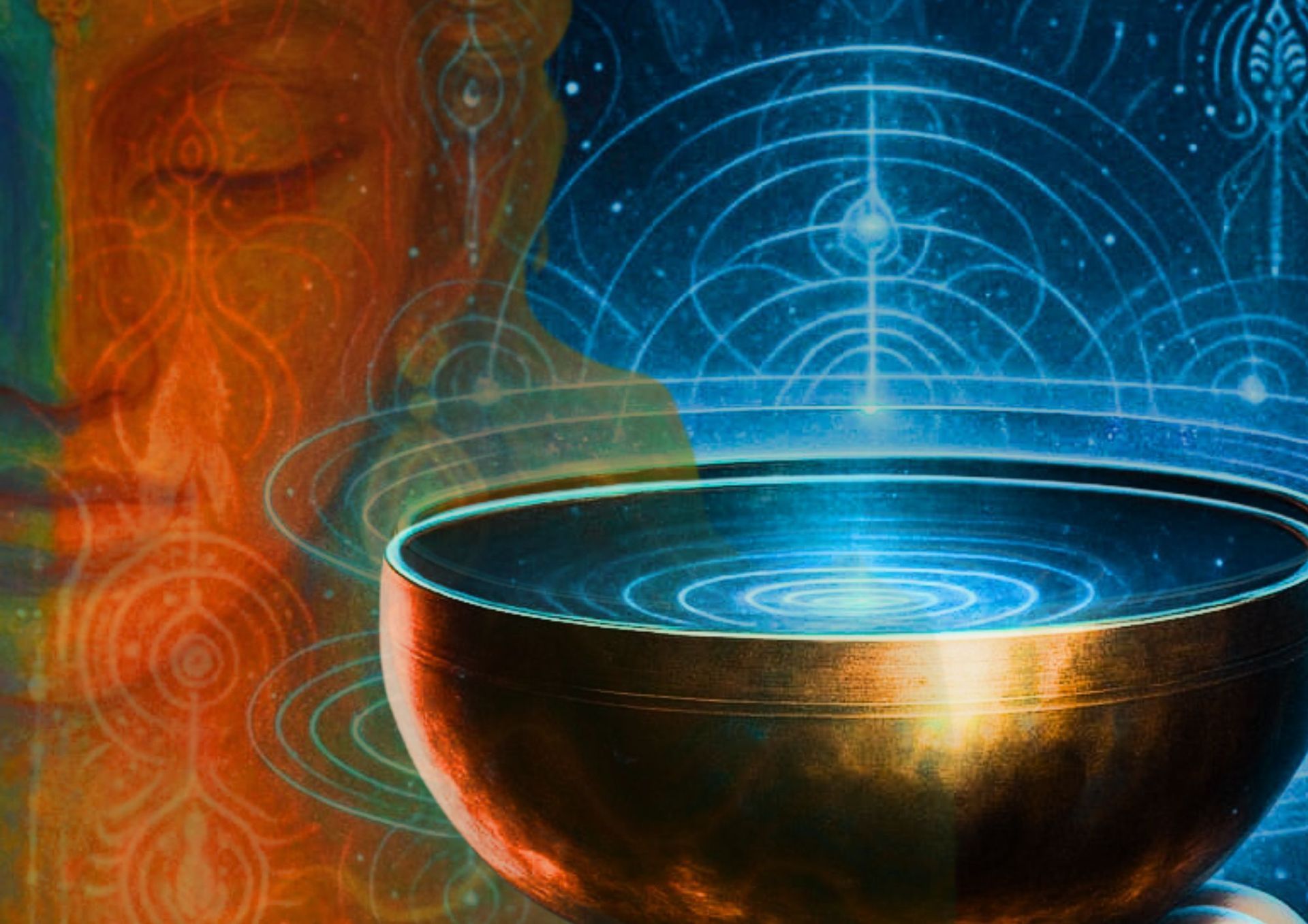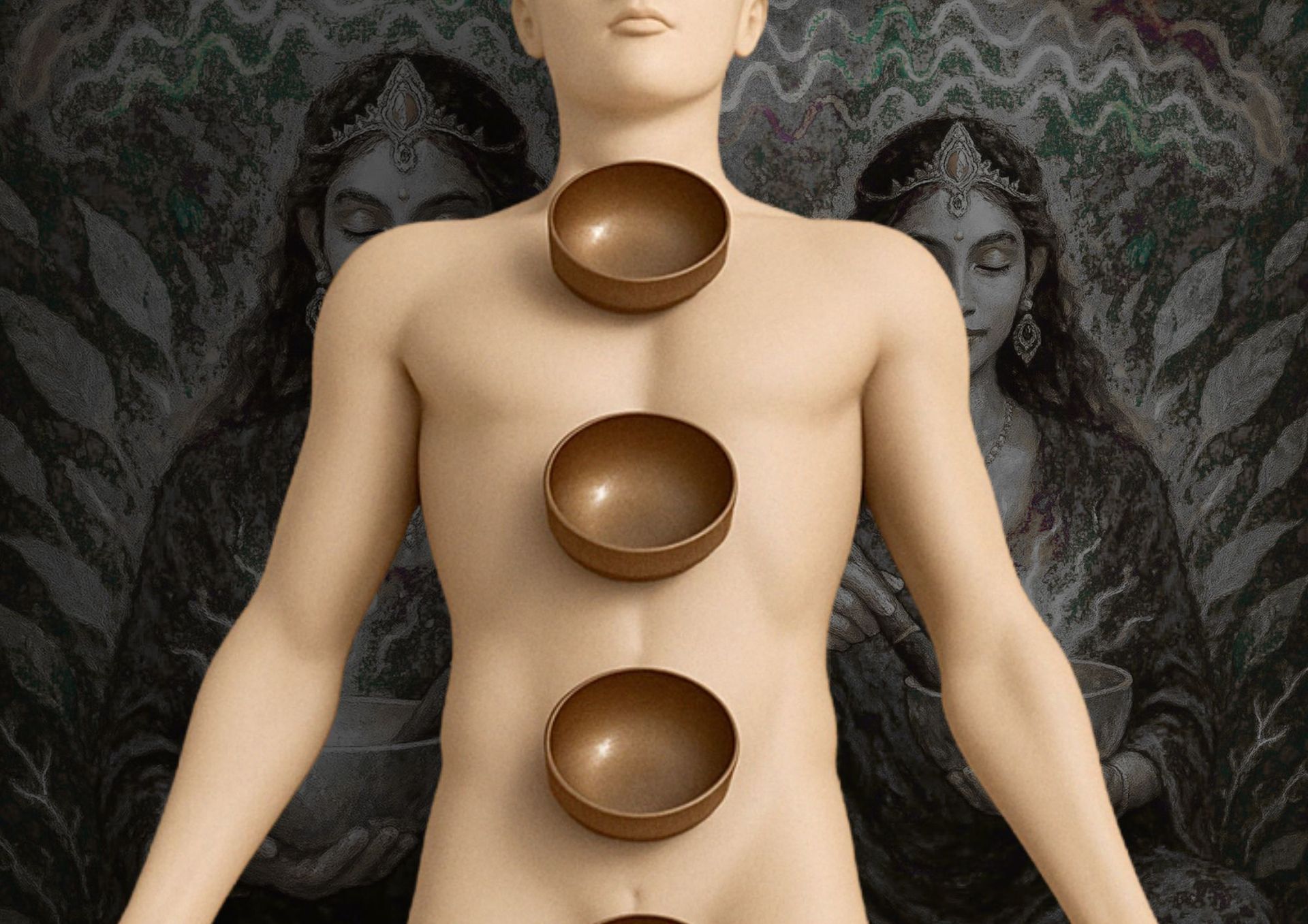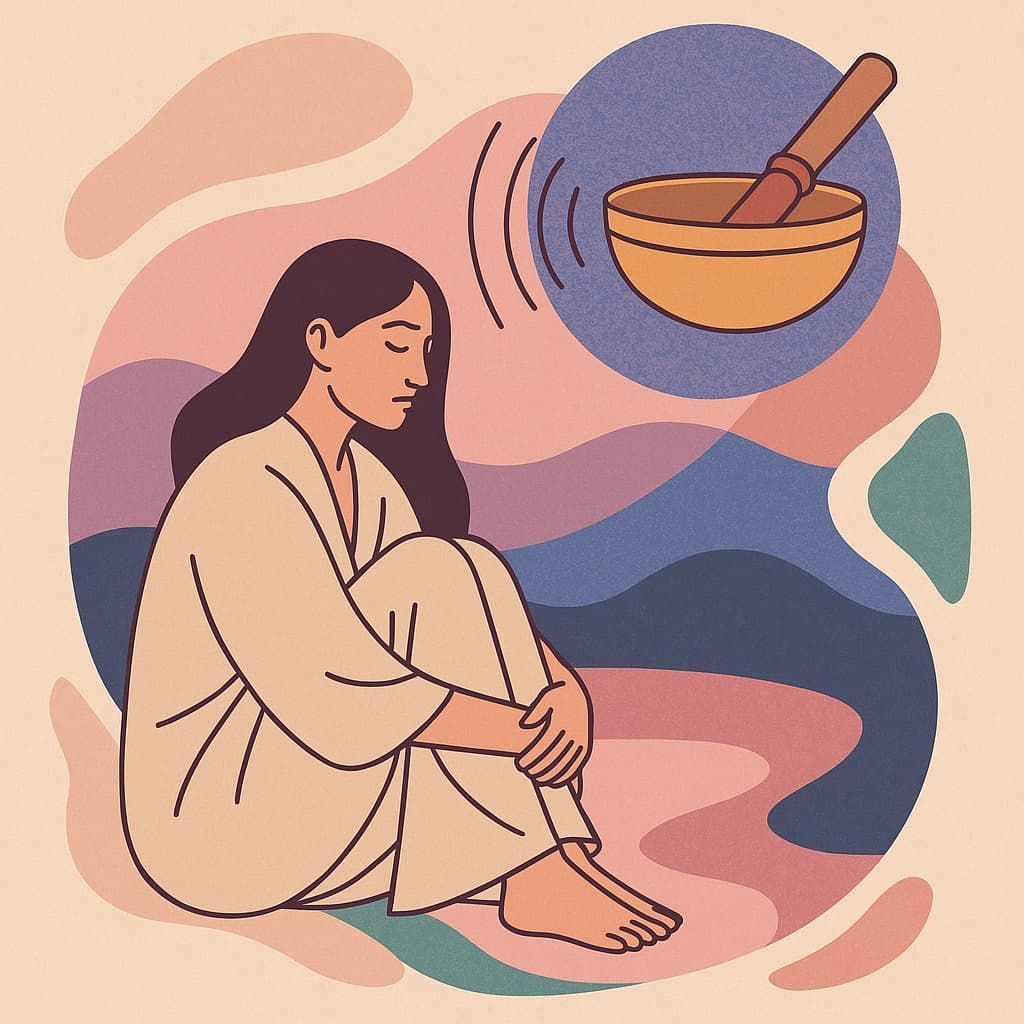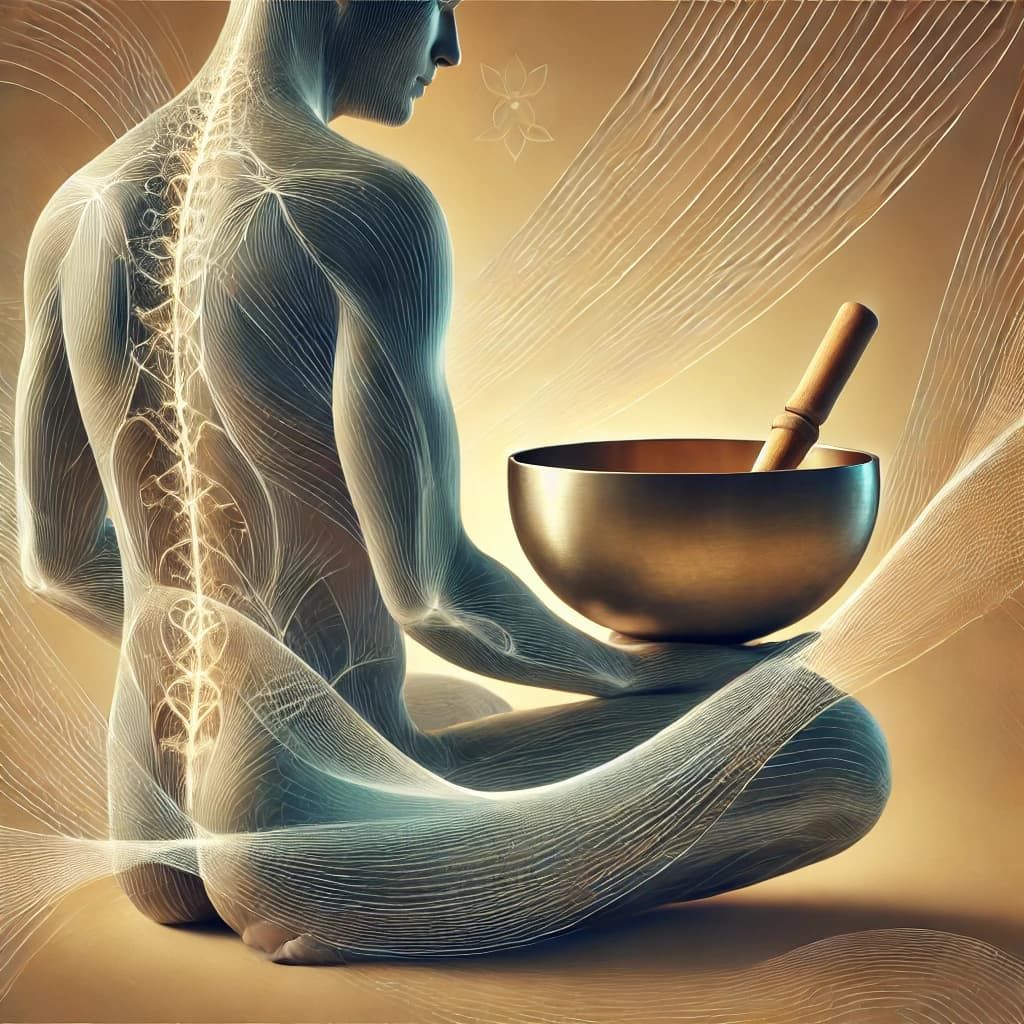A Tantric Approach to Sound: Body, Energy & the Living World
Tantric sound healing is a practice that explores the relationship between sound, energy, and consciousness through the lens of Tantra. It uses vibrational instruments — especially singing bowls — not just to relax or balance, but
to awaken, circulate, and integrate the body's vital energies.
A tantric sound healing roots the understanding of sound within the vast tradition of Tantra — a philosophical and embodied path that emerged in the area of Nepal, Tibet, China & India. Tantra recognizes the human being as a unity of body, energy, and consciousness. It sees life force — often experienced as sexual energy — as sacred, creative, and capable of transformation when consciously guided.
From this perspective, sound is not just a tool, but a bridge. It becomes a way to explore and activate the deep energetic architecture of the body, to connect the physical and the subtle, and to invite a state of expanded awareness.
Tantra of Sound: a rooted tradition
Tantric Sound Healing begins with a worldview. In this approach, Tantra is not a specific technique or a closed tradition — it is a universal framework for understanding the body, energy, and all that is alive. Rather than creating hierarchies or fixed systems of value, Tantra invites a humble observation of the many forms and roles that exist in nature and within us. Everything has its place, its rhythm, its frequency.
What makes this approach distinct is its
recognition of sexual energy as vital, not separate from the rest of life. In Tantra, there is no division between the body and sexuality: every living being is born with their own sexual essence — regardless of how it is expressed. Sexuality is not something that must be transcended or purified; it is something to be felt, honoured, and integrated into our full being.
Through this lens, sound becomes more than a tool for relaxation — it becomes a current, a guide, a frequency that can move through the entire body, including the energetic and sexual centers. Singing bowls, especially when chosen and used with care, can help carry this subtle energy across the body, not just upwards or downwards, but in circular, spiralling, and creative patterns.
Embracing the Diversity of Sound Healing
Tantra, in essence, does not separate or reject — it includes. In the context of sound healing, this means that a practitioner of tantric sound healing doesn’t claim to hold the only truth or the best technique. Instead, they remain open to the diversity of healing traditions, even if they don't personally practice them all. This openness is not a lack of structure — it’s a deeper sensitivity to dosage, rhythm, and context. A Tantric sound therapist learns to feel what is needed, what is not, and when. It’s not about mastering everything, but about listening deeply.
For those receiving sound, Tantric Healing also brings something essential: the invitation to
self-help, self-schooling, and shared wisdom. It reminds us that healing is not something done to us, but something we co-create. There is always a giver and a receiver — and sometimes both roles are held within one person.
Tantra constantly brings us back to the body, not in the abstract, but in its tiniest structures — its organs, cells, fluids, breath. Sound becomes a way to meet the body where it is, to remember its infinite intelligence. Vibrations don’t just travel — they inform, they reveal.
Tantric Lineage & Devotional Sound Practices
The word tantric also carries with it a cultural and spiritual lineage. In Himalayan traditions — particularly Tibetan and Nepali — Tantra is rooted in a religious context where healing and transformation are inseparable from
ritual, rhythm, and devotion. To call a practice Tantric is to acknowledge the presence of reverence: a healing session is not just a technique, but often a ritual, a devotional moment. Rhythm becomes sacred, not only through the instrument, but through the intention and attention placed within it.
Practices such as
Nada Yoga — the yoga of inner sound — or
Yoga Nidra — the yoga of conscious rest — are examples of this Tantric approach. In Nada Yoga, one learns to listen not only with the ears but with the whole body, to feel the pulse of sound as it vibrates through the feet, the skin, the bones. In Yoga Nidra, awareness is guided through the body, awakening sensation in precise locations, grounding consciousness through subtle rhythms.
Tantra doesn’t seek to define or categorize these experiences. Instead, it opens space for them to unfold.
Tantric Trinity: Embracing the Sacred Threefold Flow
One of the foundational principles within Tantra is what we call the Tantric Trinity — an understanding of the interconnectedness of the three sacred forces: Brahma (creation), Vishnu (sustenance), and Shiva (transformation or dissolution).
This trinitarian view helps us move out of chaos — especially mental and physical — by offering a framework that acknowledges the complexity of existence, without needing to reduce it. Tantra recognizes that the human mind works through affirmation (yes), negation (no), and uncertainty (maybe). It is precisely within that maybe that Tantra invites us to rest. To surrender.
In sound healing, this space is the meeting point between sound and silence — a threshold where experience becomes sacred. It is where the divine might be felt, even if just for a breath. A practical entry into this space is the sound Aum. Often broken into A–U–M, this primordial vibration embodies the Tantric Trinity:
- A for creation,
- U for preservation,
- M for dissolution.
To chant Aum with awareness is to tune oneself to the eternal cycle. This sound, when truly felt, is not just heard — it becomes an internal alignment, a lived rhythm, a soft return to the cosmic breath.
Practice: Chanting Aum
- Sit comfortably and relax your body
- Inhale while mentally reciting the sound “A” as the breath rises
- As you transition to exhale, mentally recite “U”
- Exhale and mentally recite “M”, feeling the vibration in your lips
- Continue without pausing between cycles — A–U–M, flowing continuously.
* If you have a singing bowl, you can play it between every three cycles for deeper sensory engagement.
Practice for a few minutes, feeling the flow of sound and breath. Let it guide you.
Thank you for taking the time to read, Namaste, xx.


















